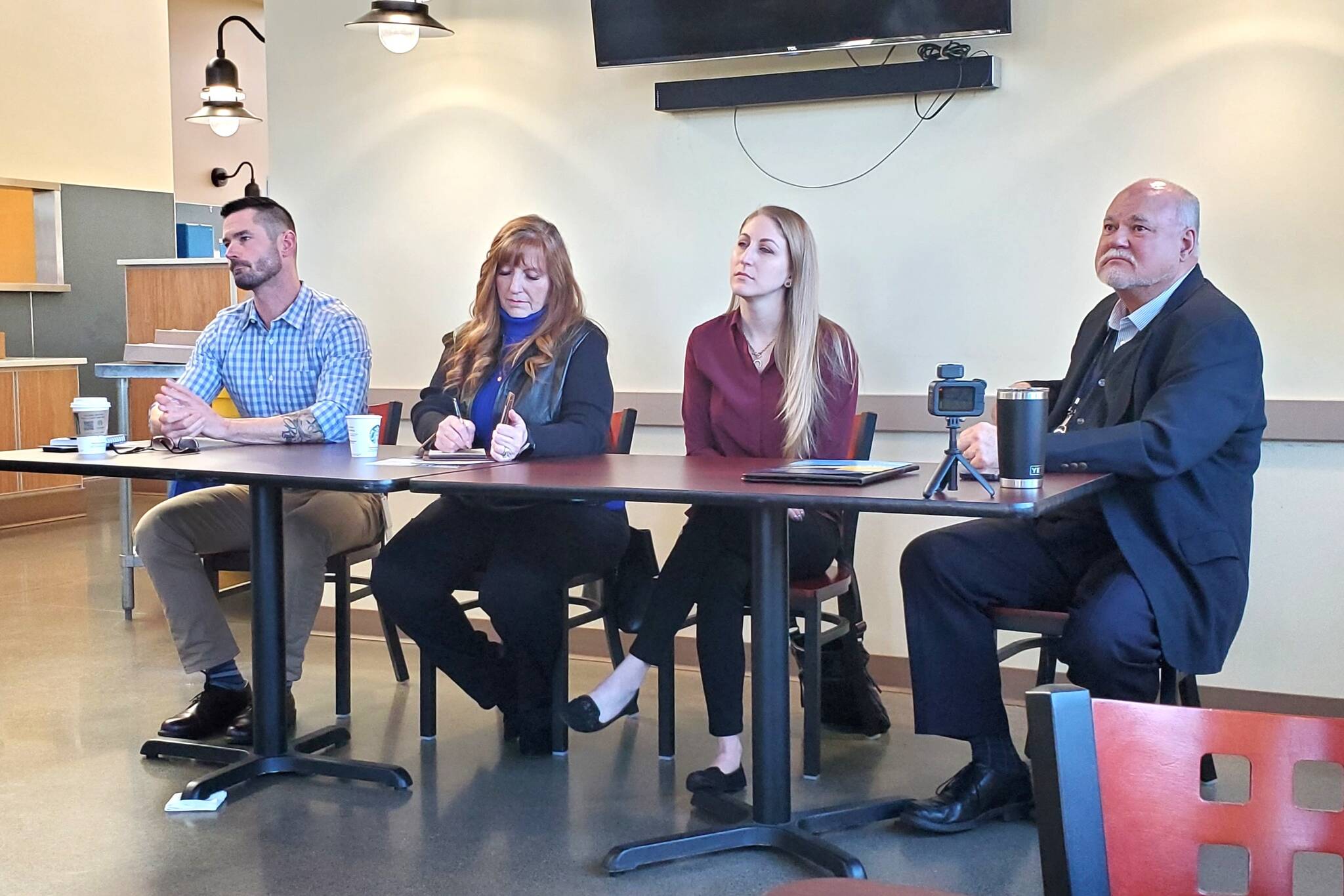Valley Cities Behavioral Health is one organization in South King County that is trying to make a dent in what is often referred to as the fentanyl crisis.
Fentanyl is 100 times more powerful than morphine and 50 times more powerful than heroin, as panelists shared at roundtable on Feb. 14. These statistics along with the rates of multi-drug use are just part of what makes fentanyl so hard to treat.
Concerned community members, mental health professionals local firefighters and more met at the Phoenix Rising Recovery Cafe in Auburn to discuss the work they do around King County.
Panelists included Dr. Richard Geiger, chief of inpatient and residential services; Vicki Brinigar, director of Recovery Place Seattle; Rose Baldridge, director of SUD Services; and Scott Stewart, program manager for inpatient services at Recovery Place Seattle. They focused on the complexity of moving someone from withdrawal and detox all the way to stable and long-term recovery and highlighted several solutions and challenges.
Brinigar said one thing that sets the Valley Cities program apart is that they offer everything they can along the care continuum. This includes detox and withdrawal services, inpatient and outpatient. They also have primary care and mental health counseling and medication management for substance use disorders.
Having everything in one place can help keep people engaged in recovery in the gaps where they often disappear. For example, just the transportation between a withdrawal location and inpatient can be a time when many leave, according to panelists.
There are also gaps in the system that are outside of their control at Valley Cities, CEO Shekh Ali said. One is that insurance authorization hasn’t caught up with the new drug. Panelists explained that withdrawal and detox from fentanyl takes longer than the drugs the insurance authorization restrictions were designed for.
Opiates from fentanyl use can still be in someone’s system almost two weeks after last use, which is twice as long as heroin. Vivitrol is a common drug treatment that can block cravings for opioids, but cannot be administered until after someone’s system is free from the addictive substances.
Insurance companies approve “three days, then after this, we need to do additional administrative work,” Ali said. “Then we get maybe three additional days or two additional days approved, but none of it goes up to the 10 or 14 days that’s required.”
’Pain is the greatest catalyst for change’
Community members at the event asked questions that centered on how youth are impacted by fentanyl use, and about accountability for those who commit crimes or violence related to drug use.
Matt Breeze lives in Auburn and shared some of his story during the roundtable. In his life experience, he said that “pain is the greatest catalyst for change” and that accountability needs to be increased in order to force people with substance use disorder to change.
“Causing more pain for an addict who uses a pain reliever as a drug of choice sometimes just causes them to want to use more,” Brinigar responded. She emphasized that while accountability is important and that they focus on personal accountability in treatment, focusing on helping an addict make positive changes can be more effective than causing them more pain.
When it comes to youth, Brinigar said one barrier is the stigma of educating school age children on how to be safe.
“There actually is a lot of resistance I think still out in our community to educate children on fentanyl and the risks,” she said. While some young people are using fentanyl intentionally, others are using it accidentally when accessing a substance that has been contaminated or laced with the drug. Knowing the risks of fentanyl and how to identify and test for the drug would help protect youth, Brinigar said.
Community member Thomas Lyman told the group about an event he started called Joy Hour that provides a sober place for families and kids to find joy together.
”25 months ago, I got out of rehab for the second time…I came out with the idea of connection versus isolation. And I believe in the heart of a child, that at the heart of all of us, we long for connection,” Lyman said about his reason for starting Joy Hour. “If we want to help fix this issue, we’ve got to start at young ages and really prevent the lack of connection in the first place.”



